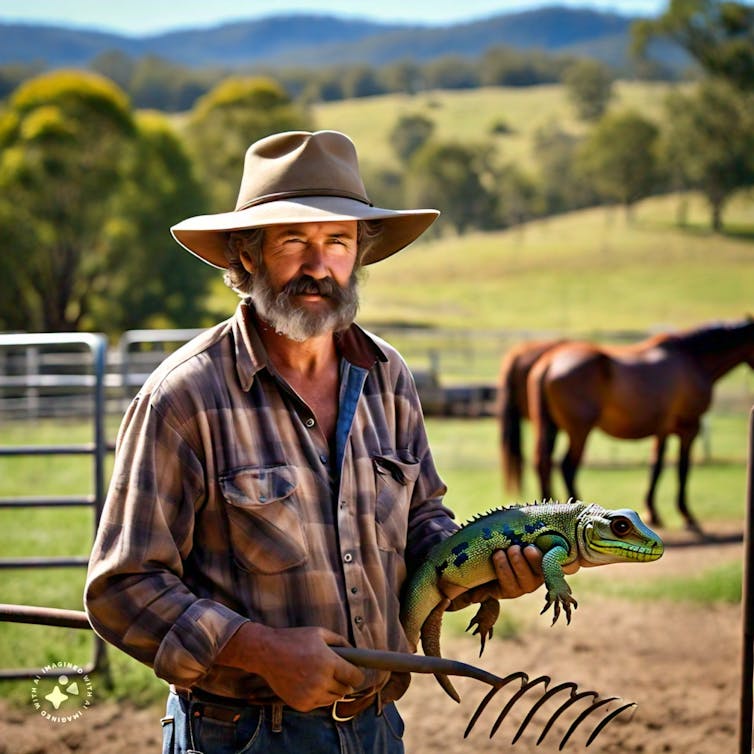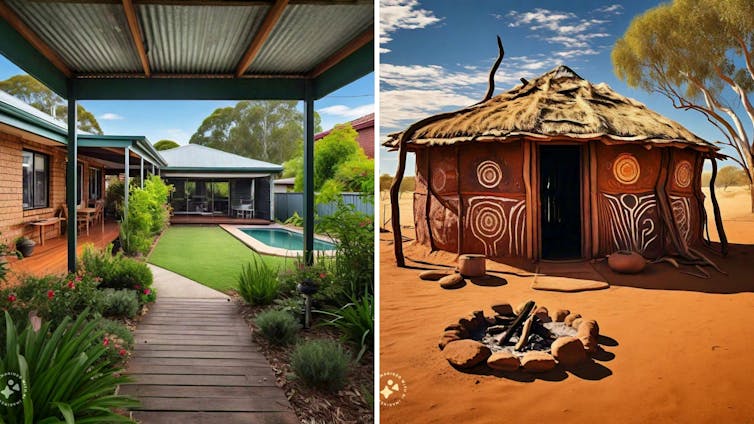Last month at the Association of Internet Researcher’s (AoIR’s) annual conference—held for the first time in Latin American, namely in Niterói, Brazil—my time on Executive Committee came to an end after six years. After this extended period being part of the team running AoIR, it was quite a strange and emotional experience stepping away. Given that, I thought I’d take a moment or two to reflect on what the journey has been like, what I’ve loved about it, the challenges, and my hopes for AoIR going forward.
For those who aren’t familiar, AoIR elects most of its Executive positions for a 2-year term, except the Vice-President who is elected for 2 years in that role, but them automatically rolls over for 2 years as President and then 2 final years as Immediate Past President. Committing to anything for 6 years is a big deal, and like every AoIR President my running reflects just how much AoIR means to me. I attended my first AoIR conference back in 2006, the first time it was held in Australia and immediately felt like I’d found my academic community. AoIR prides itself on being welcoming to new folks, not dividing scholars into silos, having very few boundaries between established and new scholars—including grad students—, and for having a stellar annual doctoral colloquium that’s particularly strong at integrating grad students into the broader community.
Sadly, I never got to attend an AoIR doctoral colloquium as a student, but have compensated by serving as a mentor for most of the years I’ve been at the conference. Each and every time, the deep and meaningful discussions with new grad students reminds me just how much amazing scholarship is happening, how lucky AoIR is that new grads are joining all the time, and how vital doctoral colloquiums (or colloquia) are in helping the next generation of scholars orient themselves and find their people.
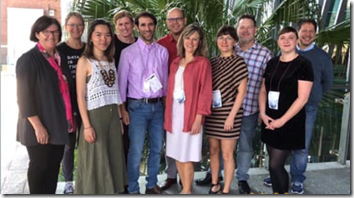 I ran for the Vice President role in April 2019 and was genuinely surprised to be elected. Little did I know how much the world was going to change shape in the time I was on the executive team!
I ran for the Vice President role in April 2019 and was genuinely surprised to be elected. Little did I know how much the world was going to change shape in the time I was on the executive team!
When the COVID-19 pandemic lockdowns and halts on travel meant the online world was the only way to network for a long time, like every organisation AoIR had to adapt. Originally we were supposed to be heading to Dublin in 2020, but that was quickly shelved. Instead, the pressure of being an association of internet researchers meant the AoIR executive team, along with members of the Dublin local team, felt the pressure to pivot to a meaningful online conference that was more than just substituting everything for Zoom. We initiated new super-short videos for papers, created a schedule that allowed participation from the many time zones people were connecting from, reinvented the sociality of the conference in AoIRTown, and generally ran a conference that all of us were proud of. More than that, though, the engine driving this was all the volunteer labour of the Exec team and the Dublin folks, especially Kylie Jarrett. And it was a lot of free labour. From Lynn Schofield Clark as our President, through to the old guard of Axel, Kelly, Kat and Crystal, to Fabio, Erika, Zoe and me, we all put in huge hours to make #AoIR2020, our first online conference, a thing to remember. And it was a blast, both as an academic and a social experience; AoIR karaoke has never been so memorable!
When 2021 started, I think we all genuinely thought we’d be able to return to a live experience initially, but it soon became apparent that wasn’t possible and #AoIR2021 was also online, building on our experiences of the previous year, this time with the energy of the crew from Philadelphia (who were originally planned to host that year). When the 2019-2021 Exec team stood down, I know each and every one of us felt we’d done everything we could do ensure AoIR’s unexpected two online-only conferences were memorable, social and inclusive. We know looking back that a lot of long-term AoIR community members attended their first conference in those two years because they were so accessible. It’s also worth remembering that we made both of those conferences completely free to all AoIR members, and that clearly reduced some significant barriers.
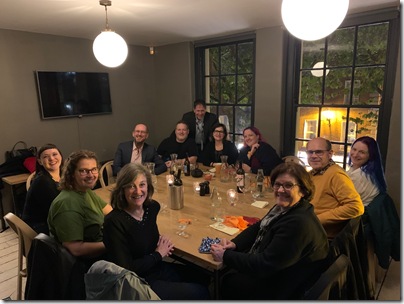 When the 2021-2023 Executive Committee took the reins, our main task was to get AoIR back to face-to-face conferencing, returning with #AoIR2022 in Dublin and #AoIR2023 in Philly. With Lynn as Immediate Past President, Nik John joined as Vice President, Kelly persisted valiantly as Treasurer and we were joined by Emily, Oz, Raquel, Cindy and Job. We were also lucky to have Kylie Jarrett and Adrienne Shaw as our local chairs, both of whom stepped up during their emergency replacement online year, and then continued in that role once in-person conferencing became possible once more. I was especially spoilt to enjoy the company of both of these fine people over a very long time, and to have deep respect for their commitment to AoIR, to running a good conference, and to showcasing the best of their respective locations. Sharing a Guinness with Kylie in Dublin after 3 years of planning, and trying a cheesesteak with Adrienne at the #AoIR2023 closing party after 4 years working together, were utter joys. I will always cherish their friendship and always be grateful to how much they gave AoIR, how good their conferences were, and how well they led their local teams. Those teams, of course, were incredibly important, too! While there were challenges in re-engaging in one physical location, and a few bumps along the way, these teams worked so hard and we got it as right as was possible to do!
When the 2021-2023 Executive Committee took the reins, our main task was to get AoIR back to face-to-face conferencing, returning with #AoIR2022 in Dublin and #AoIR2023 in Philly. With Lynn as Immediate Past President, Nik John joined as Vice President, Kelly persisted valiantly as Treasurer and we were joined by Emily, Oz, Raquel, Cindy and Job. We were also lucky to have Kylie Jarrett and Adrienne Shaw as our local chairs, both of whom stepped up during their emergency replacement online year, and then continued in that role once in-person conferencing became possible once more. I was especially spoilt to enjoy the company of both of these fine people over a very long time, and to have deep respect for their commitment to AoIR, to running a good conference, and to showcasing the best of their respective locations. Sharing a Guinness with Kylie in Dublin after 3 years of planning, and trying a cheesesteak with Adrienne at the #AoIR2023 closing party after 4 years working together, were utter joys. I will always cherish their friendship and always be grateful to how much they gave AoIR, how good their conferences were, and how well they led their local teams. Those teams, of course, were incredibly important, too! While there were challenges in re-engaging in one physical location, and a few bumps along the way, these teams worked so hard and we got it as right as was possible to do!
I will note, I was very lucky to have the Exec and local teams in 2022 and 2023 that I did. One of the things the Vice President usually learns is just how to run the AoIR conference by shadowing the President. From Lynn I learnt a hell of a lot about running a great online event, but my knowledge of rooms and catering and logistics was a little thin before the Dublin conference, and the team really did a lot of heavy lifting to compensate for me learning more on the job than I’d have hoped!
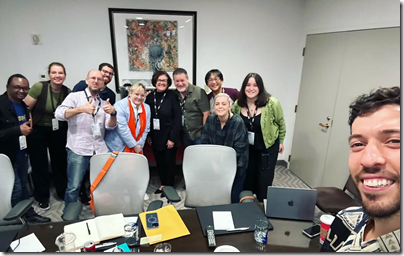 The end of #AoIR2023 saw the Kelly Quinn’s time on the Executive come to an end, which was quite an era as Kelly had been on the Exec since 2011 in some fashion (as Grad Student Rep initially, then Open Seat and the 4 terms as treasurer, to the end of 2023), and we rightfully now have renamed our travel awards as the Kelly Quinn Travel Awards, acknowledging her service over more than a decade.
The end of #AoIR2023 saw the Kelly Quinn’s time on the Executive come to an end, which was quite an era as Kelly had been on the Exec since 2011 in some fashion (as Grad Student Rep initially, then Open Seat and the 4 terms as treasurer, to the end of 2023), and we rightfully now have renamed our travel awards as the Kelly Quinn Travel Awards, acknowledging her service over more than a decade.
By the time I handed the Presidency on to Nik John, we’d successfully spun back up the in-person experience, but now the Exec team wanted to see if it was possible to integrate the lessons from our two online conferences, too. The 2023-2025 Executive Committee brought a huge amount of energy in pushing AoIR to look beyond what it was, to what it really could be going forward. With Nik in the lead, we welcomed Sarah Roberts as Vice President, Sam Srauy had big shoes to fill as our new Treasurer, Job had a second term and we were joined by Gabe, Sophie, Ari and Tom. In Sheffield for #AoIR2024, the local team led by Ysabel and Tim offered official online livestreams for the first time at an in-person event. Then just last month in Niterói for #AoIR2025, not only were there multiple livestreams online, but we also had simultaneous translation streams and enjoyed both our keynote and plenary sessions in Portuguese, with live translation to English. The Niterói conference really pushed the whole team, local (including superstars Adri, Raquel, and Simone) and the Exec, but as we now look into the future, we’ve tried so much and learnt so many lessons that can inform the organisation going forward. It’s also fair to say that the conference parties in Sheffield (bumper cars!) and then Niterói (just … well, everything!) are likely to live on in infamy as the best after-parties for any academic conference. Ever!
Beyond the conferences, from the online pandemic years through to the massive success in Niterói last month, the thing that’s made the time on the Executive so important to me has been the people. I’ve mentioned how much I valued the long working relationships with Kylie and Adrienne as they helmed their conferences, and now I treasure both as good and dear friends. I’ve also been lucky to build deep ties with Lynn and Nik. As Vice President every fortnight I’d get to check in for an hour with Lynn; it’d be early morning for her, and she’d have a big cup of something hot and her dogs waking in the background, while for me it was the other end of the day, but across those many meetings we not only helped steer AoIR through the pandemic, but also had a chance to really bond. I’ve respected Lynn from her work on youth and parenting online long before we were colleagues, but working with her and seeing real empathic, caring and values-driven leadership in action was such a powerful role model for me. Then, when I was President, I had the pleasure of building a similar relationship with Nik, sharing bits of our lives as well as thinking about how to move AoIR forward. I know Nik has had some real personal challenges during his Presidency, but to his credit I know how much he’s consistently put into AoIR no matter what, and I deeply respect that.
 As well as Lynn and Nik, the person who was there for all 4 years of those meetings was our trusted Association Coordinator, our AC, Michelle. In an annoying self-deprecating way, whenever we’ve told Michelle how much we value the many, many hours she’s put into AoIR, she usually retorts that she’s ‘just an employee’. And while she technically is AoIR’s only employee (and a part time contractor at that), she’s just so much more than those words imply. Michelle has put in nights, weekends, dealt with crisis after crisis, and all the while provided a stable, steady hand just as we’ve needed it. More than that, AoIR’s last five presidents have had the pleasure of getting to know Michelle, her partner Adam and Michelle’s daughter and granddaughter in the background of our Zoom meetings, and occasionally turning into real people at our conferences! For me, road tripping with Adam and Michelle from Manchester to Sheffield was a joyful and terrifying introduction to cars and trucks passing on roads designed with not even a single lane of traffic in mind! Michelle will probably always be ‘AC’ in my mind, but she’ll always be a treasured friend, too.
As well as Lynn and Nik, the person who was there for all 4 years of those meetings was our trusted Association Coordinator, our AC, Michelle. In an annoying self-deprecating way, whenever we’ve told Michelle how much we value the many, many hours she’s put into AoIR, she usually retorts that she’s ‘just an employee’. And while she technically is AoIR’s only employee (and a part time contractor at that), she’s just so much more than those words imply. Michelle has put in nights, weekends, dealt with crisis after crisis, and all the while provided a stable, steady hand just as we’ve needed it. More than that, AoIR’s last five presidents have had the pleasure of getting to know Michelle, her partner Adam and Michelle’s daughter and granddaughter in the background of our Zoom meetings, and occasionally turning into real people at our conferences! For me, road tripping with Adam and Michelle from Manchester to Sheffield was a joyful and terrifying introduction to cars and trucks passing on roads designed with not even a single lane of traffic in mind! Michelle will probably always be ‘AC’ in my mind, but she’ll always be a treasured friend, too.
 One of my last experiences on the Executive Committee in Niterói was a full day planning session where the outgoing 23-25 team and the incoming 25-27 Executive Committee all got together and mapped out where we want AoIR to be in the coming years, and what values and commitments are at the heart of that journey. In the end that roadmap was robust enough to guide the next years, but also filled with heart. At its core were AoIR’s commitment to kindness and the importance of our younger colleagues, our grad students and ECRs. After that day of working together, I’m confident beyond words that the new AoIR Executive Committee has AoIR’s highest ideals driving them. With Sarah as President, I’m so pleased to have the association in Andra, Nik, Rob, Nathalie, Lynrose, Rebecca, Meg and Admire’s hands. They’re a fine group of people, and while I’ve not know all of them as long, from our time together I know AoIR is in very safe, very reliable, very caring hands. I look forward to #AoIR2026 and the many conferences to come, as well as seeing AoIR grow and mature as an organisation and community that so many people cherish. Thanks to everyone who was part of my time on the Exec team; I’ve cherished the time, experience, camaraderie and friendship!
One of my last experiences on the Executive Committee in Niterói was a full day planning session where the outgoing 23-25 team and the incoming 25-27 Executive Committee all got together and mapped out where we want AoIR to be in the coming years, and what values and commitments are at the heart of that journey. In the end that roadmap was robust enough to guide the next years, but also filled with heart. At its core were AoIR’s commitment to kindness and the importance of our younger colleagues, our grad students and ECRs. After that day of working together, I’m confident beyond words that the new AoIR Executive Committee has AoIR’s highest ideals driving them. With Sarah as President, I’m so pleased to have the association in Andra, Nik, Rob, Nathalie, Lynrose, Rebecca, Meg and Admire’s hands. They’re a fine group of people, and while I’ve not know all of them as long, from our time together I know AoIR is in very safe, very reliable, very caring hands. I look forward to #AoIR2026 and the many conferences to come, as well as seeing AoIR grow and mature as an organisation and community that so many people cherish. Thanks to everyone who was part of my time on the Exec team; I’ve cherished the time, experience, camaraderie and friendship!
![]()
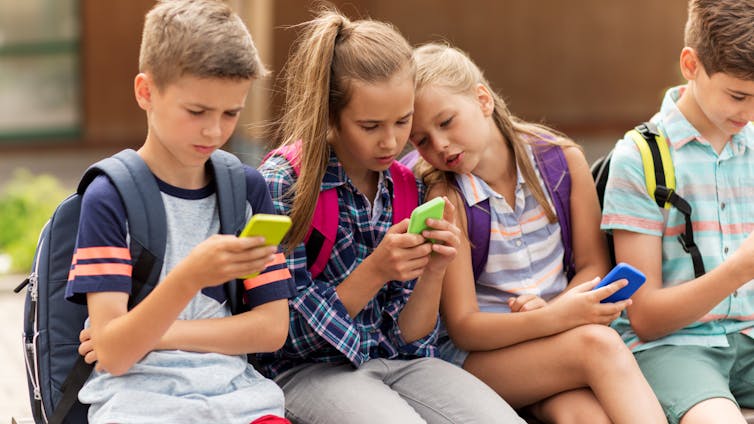
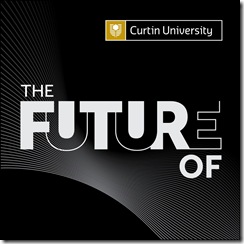 I enjoyed being interviewed for this podcast, which really gave me the space to outline what I think about the social media ban/delay for under16s in Australia, what I think young people and their parents, carers and trusted adults need to think about *before* December 10th (when it kicks in), and what else is just around the corner that might be of more concern.
I enjoyed being interviewed for this podcast, which really gave me the space to outline what I think about the social media ban/delay for under16s in Australia, what I think young people and their parents, carers and trusted adults need to think about *before* December 10th (when it kicks in), and what else is just around the corner that might be of more concern. I ran for the Vice President role in April 2019 and was genuinely surprised to be elected. Little did I know how much the world was going to change shape in the time I was on the executive team!
I ran for the Vice President role in April 2019 and was genuinely surprised to be elected. Little did I know how much the world was going to change shape in the time I was on the executive team!  When the
When the  The end of #AoIR2023 saw the Kelly Quinn’s time on the Executive come to an end, which was quite an era as Kelly had been on the Exec since 2011 in some fashion (as Grad Student Rep initially, then Open Seat and the 4 terms as treasurer, to the end of 2023), and we rightfully now have renamed our travel awards as the Kelly Quinn Travel Awards, acknowledging her service over more than a decade.
The end of #AoIR2023 saw the Kelly Quinn’s time on the Executive come to an end, which was quite an era as Kelly had been on the Exec since 2011 in some fashion (as Grad Student Rep initially, then Open Seat and the 4 terms as treasurer, to the end of 2023), and we rightfully now have renamed our travel awards as the Kelly Quinn Travel Awards, acknowledging her service over more than a decade. As well as Lynn and Nik, the person who was there for all 4 years of those meetings was our trusted Association Coordinator, our AC, Michelle. In an annoying self-deprecating way, whenever we’ve told Michelle how much we value the many, many hours she’s put into AoIR, she usually retorts that she’s ‘just an employee’. And while she technically is AoIR’s only employee (and a part time contractor at that), she’s just so much more than those words imply. Michelle has put in nights, weekends, dealt with crisis after crisis, and all the while provided a stable, steady hand just as we’ve needed it. More than that, AoIR’s last five presidents have had the pleasure of getting to know Michelle, her partner Adam and Michelle’s daughter and granddaughter in the background of our Zoom meetings, and occasionally turning into real people at our conferences! For me, road tripping with Adam and Michelle from Manchester to Sheffield was a joyful and terrifying introduction to cars and trucks passing on roads designed with not even a single lane of traffic in mind! Michelle will probably always be ‘AC’ in my mind, but she’ll always be a treasured friend, too.
As well as Lynn and Nik, the person who was there for all 4 years of those meetings was our trusted Association Coordinator, our AC, Michelle. In an annoying self-deprecating way, whenever we’ve told Michelle how much we value the many, many hours she’s put into AoIR, she usually retorts that she’s ‘just an employee’. And while she technically is AoIR’s only employee (and a part time contractor at that), she’s just so much more than those words imply. Michelle has put in nights, weekends, dealt with crisis after crisis, and all the while provided a stable, steady hand just as we’ve needed it. More than that, AoIR’s last five presidents have had the pleasure of getting to know Michelle, her partner Adam and Michelle’s daughter and granddaughter in the background of our Zoom meetings, and occasionally turning into real people at our conferences! For me, road tripping with Adam and Michelle from Manchester to Sheffield was a joyful and terrifying introduction to cars and trucks passing on roads designed with not even a single lane of traffic in mind! Michelle will probably always be ‘AC’ in my mind, but she’ll always be a treasured friend, too. One of my last experiences on the Executive Committee in Niterói was a full day planning session where the outgoing 23-25 team and the incoming
One of my last experiences on the Executive Committee in Niterói was a full day planning session where the outgoing 23-25 team and the incoming 



